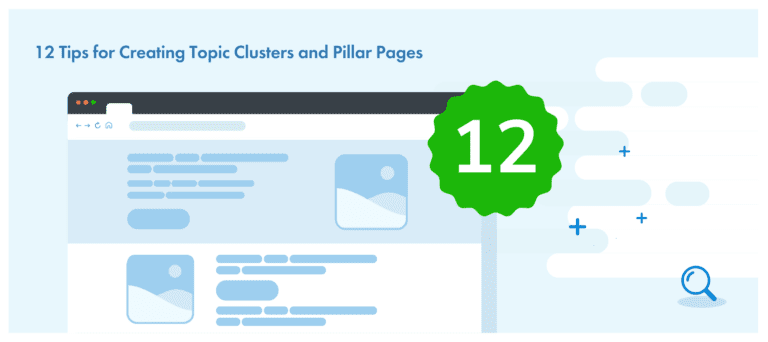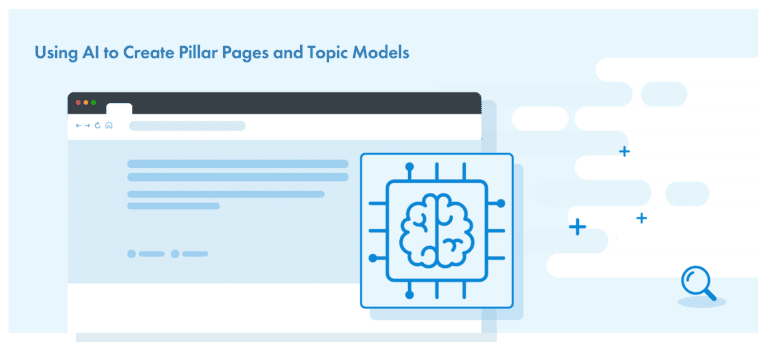What are Featured Snippets?
Featured snippets, also known as “Google Answer Boxes” or “search snippets,” are a type of prominent search engine results page (SERP) feature provided by search engines like Google. These snippets appear at the top of the organic search results, typically even before the first organic search result, in what’s often called “position zero.”
The primary purpose of featured snippets is to provide quick and concise answers to users’ search queries, particularly those that can be answered with brief and straightforward information. Featured snippets are highly visible and include text, lists, tables, or images. They aim to deliver relevant information directly on the SERP, reducing the need for users to click through to a website for answers.
Why are Featured Snippets important?
1. Visibility and Credibility
2: Higher Click-Through Rates (CTR)
3: Voice Search Optimisation
4: Competitive Advantage
5: Positioning as an Authority
6: Branding Opportunity
7: Long-Term Traffic
8: Data Collection
While it’s true that featured snippets provide quick answers on the Search Engine Results Page (SERP) and can reduce the immediate need for users to click through to a website, they are still important for several reasons:
1. Visibility and Credibility
Earning a featured snippet places your content at the top of the organic search results, often in “position zero.” This prime placement enhances your brand’s visibility and credibility as an authoritative source for the topic.
2: Higher Click-Through Rates (CTR)
While featured snippets may initially provide an answer, users often click through to the source for more detailed information or context. In this sense, featured snippets boost CTR by piquing user interest.
3: Voice Search Optimisation
As voice search continues to grow in popularity, featured snippets play a crucial role. Voice assistants like Siri, Alexa, and Google Assistant often read out the featured snippet as the answer to voice queries, making it vital for voice search optimisation.
4: Competitive Advantage
If your content consistently earns featured snippets, you gain a competitive advantage over other websites. Users are more likely to trust and click on content that regularly appears in featured snippets.
5: Positioning as an Authority
Being featured in snippets reinforces your website’s status as an authority in your niche; this can lead to more organic traffic, backlinks, and opportunities for partnerships or collaborations.
6: Branding Opportunity
Featured snippets often include the website’s brand or domain name, increasing brand recognition and user trust. Even if users don’t click through immediately, they may remember your brand for future reference.
7: Long-Term Traffic
Some users may save or bookmark your page for later reference after seeing your content in a featured snippet; this can lead to sustained, long-term traffic to your website.
8: Data Collection
Featured snippets provide valuable data about the types of queries and topics users are interested in. This information can inform your content strategy and help you create more relevant, targeted content.
Types of Google Featured Snippets
1. Paragraph Snippets
2. List Snippets
3. Table Snippets
4. Video Snippets
5. Accordion Snippets
6. Definition Snippets
7. Statistical Snippets
8. Calculator Snippets
9. Rich Media Snippets
10. Reviews and Rating Snippets
11. Local Snippets
12. Knowledge Panel
13. Featured Lists
Featured snippets come in several types, each tailored to answer specific user queries. Here are the main types of featured snippets:
Paragraph Snippets

These are the most common types of featured snippets. Paragraph snippets are concise text excerpts from web pages that search engines display as featured snippets in search results. These snippets aim to directly answer user queries, typically in response to questions starting with “how to,” “what is,” or similar phrases.
List Snippets
List snippets are featured snippets that present information in a list format. They commonly appear in response to user queries like “top 10,” “best of,” or “steps to.”
Table Snippets
Table snippets are a type of featured snippet in search results that present data or information in a tabular format. They are often used to display comparisons, specifications, or data sets in response to user queries.
- Typically, table snippets have 2 to 5 columns.
- The number of rows vary based on the complexity of the information
- Aim for concise and informative table data.
- Each cell should contain brief and relevant text.
- Avoid excessive wordiness; focus on providing essential details.
- There’s no strict word count limit, but keep the content readable.
Video Snippets
Video snippets include a video thumbnail, a brief description, and a link to a video that answers the user’s query. They are used for questions related to tutorials, reviews, or demonstrations.
Accordion Snippets
Also known as “accordion featured snippets,” these snippets provide a clickable list of items within the featured snippet. When a user clicks on an item, it expands to reveal more information. These are used for queries with multiple related subtopics.
Definition Snippets
Definition snippets provide concise definitions of terms or concepts. They are often used for dictionary-style queries such as “What is [term]?”
Statistical Snippets
Statistical snippets display data and statistics in a visually appealing format, such as charts or graphs. They are used for queries related to numerical data.
Calculator Snippets
Calculator snippets allow users to perform calculations directly within the SERP. Users can input numbers and operators to get instant results for mathematical queries.
Rich Media Snippets
These snippets may include images, charts, graphs, or interactive elements to provide a more visual response to a user’s query. They are often used for questions related to visual data or comparisons.
Reviews and Rating Snippets
These snippets display aggregated review ratings and excerpts from user reviews. They are commonly used for product or service-related queries.
Local Snippets
Local snippets include information about nearby businesses, such as their name, address, phone number, and reviews. They are commonly shown for “near me” or location-specific queries.
Knowledge Panel
Knowledge panels provide a comprehensive overview of a specific entity, such as a famous person, place, or organisation. They often include images, key facts, and links to additional information.
Featured Lists
Featured lists are similar to list snippets but often feature more items or a more detailed list. They may also include links to the source page.
Google continuously evolves its featured snippets to match user intent and provide more relevant information. Understanding these different types of featured snippets can help content creators optimise their content to appear in these valuable positions in search results.
How to Get Featured Snippets for a Pillar Page?
1. Target featured snippet friendly keywords
2. Ensure content is well-structured and correctly formatted
3. Ensure content provides clear and concise answers
4. Use ordered lists in your featured snippet block
5. Get your SEO fundamentals in order
6. Implement Schema markup
7. Optimise meta descriptions
8. Optimise your pillar page for mobile devices
9. Continuously monitor your pillar page’s performance
Featured snippets can appear for a wide range of search queries, including those related to comprehensive topics covered by pillar pages. However, there are no guarantees that your pillar page will achieve a featured snippet, as it depends on various factors, including the keyword’s competitiveness, the quality and relevance of your content, and Google’s algorithms.
To increase your chances of earning a featured snippet for a pillar page, consider the following strategies:
1. Target Featured Snippet-friendly keywords
Identify keywords that commonly trigger featured snippets. These are often questions or queries that start with words like “how to,” “what is,” “why,” etc. Craft your pillar page content to provide concise and informative answers to these queries. For example:
2. Ensure content is well-structured and correctly formatted
To optimise your pillar page for search engines, structure your content using headers, lists, and tables where appropriate; this will make it easier for search engines to feature your content as a snippet. Ensure that your page has a header (h2, h3, etc.) that includes the search query, such as “how to do…” or “what is…”.
3.Provide clear and concise answers
Ensure your content provides clear and concise answers to common user questions related to your pillar page topic. Use headers or subheadings to frame answers in a way that makes it easy for Google to pull them as snippets.
Create a concise response to a question of no more than 320 characters, including spaces (or 50-55 words), per Google’s limit for meta descriptions since December 2017. Remember to place the answer in a <p> tag after the search query header. Avoid inserting images or other embedded assets between the title and the answer copy.
4. Use ordered lists in your featured snippet block
Consider adding an ordered list or the word “step” to subheadings to outline a sequence of actions for a chronological list of steps to appear in the snippet. For example Step 1: , Step 2:
5. Get your SEO fundamentals in order
Improve your SEO fundamentals to ensure your desired page appears on the first page of Google’s search results. Most featured snippets are already among the top five search results. Align your website with Google’s standards for a top-notch site, including mobile optimisation, secure HTTPS protocol, fast loading speed, and high-quality content.
Check your Core Web Vitals
[https://offers.lighthouseuk.net/seo-launchpad]
6. Implement Schema markup where applicable
Schema markup is a structured data vocabulary that provides additional context to the content on your web page. It helps search engines better understand the meaning and relationships of various elements on your page. When your content is marked up with schema, it’s more likely to be selected for featured snippets because search engines can easily extract relevant information.
7. Optimise meta descriptions
Craft informative meta descriptions that summarise the content of your pillar page. Google may use this information for featured snippets.
8. Optimise your pillar page for mobile devices
Google prioritises mobile-friendly websites in its search rankings. Optimising your pillar page for mobile devices is essential for maintaining your search engine rankings, staying competitive, and providing an excellent user experience. It’s an investment in the long-term success of your pillar page and broader content marketing strategy.
9. Continuously monitor your pillar page’s performance
Continuously monitor your pillar page’s performance and make improvements as needed. Google may rotate featured snippets over time, so be prepared to adapt your content to maintain or regain the position.
Conclusion
Remember that featured snippets can enhance your visibility and drive organic traffic, but they are just one aspect of a successful pillar page strategy. Focus on creating high-quality, comprehensive content that genuinely serves your audience and optimise it for featured snippets where relevant.





